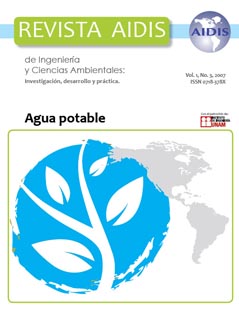The coagulation effect using alternative pre-oxidants to the chlorine in the formation potential of organic halogenated byproducts in water with humic substances
Main Article Content
Abstract
The presence of humic substances in water supply has brought many problems, resulting from the formation of halogenated organic byproducts, which are expected to be carcinogenic, especially when pre-oxidation with chlorine is adopted. The main halogenated organic compounds that can be found in treated water, are trihalomethanes, haloacetic acids, haloaldehyde, haloaketones, halophenols, and halopicrin. The use of pre-oxidation with chlorine contributes for the formation of such byproducts in water treatment plants (WTP). This research was carried out to evaluate the potential formation of the following substances: trihalomethanes, haloacetic acids, haloaldehydes, haloaketones, halophenols, halopicrins and chloral hidrate by gas chromatography with electron capture detector in a water prepared with addition of humic substances extracted from peat soil, pre-oxidated with chroline, chlorine dioxide, potassium permanganate, hydrogen peroxide, ozone and peroxone, followed by coagulation, filtration, and post-chlorination. The results obtained showed that the use of alternative pre-oxidants, such as: potassium permanganate, chlorine dioxide, hydrogen peroxide, ozone and peroxone, associated with coagulation, filtration, and post-chlorination produce significant amounts of byproducts, with attention for the substances not cited in the current legislation.
Article Details
How to Cite
[1]
Wiecheteck, G.K., Latanze, R., Pereira Rosa Paschoalato, C.F., Resende Trimailovas, M. and Di Bernardo, L. 2009. The coagulation effect using alternative pre-oxidants to the chlorine in the formation potential of organic halogenated byproducts in water with humic substances. Revista AIDIS de ingeniería y ciencias ambientales: Investigación, desarrollo y práctica. 1, 3 (Nov. 2009).
